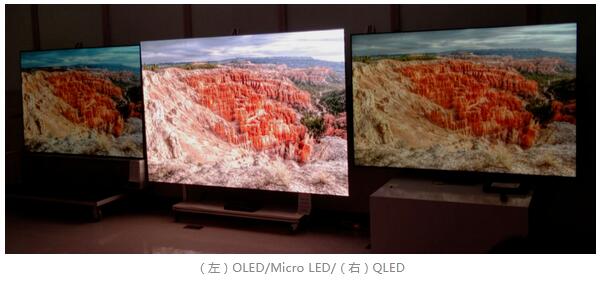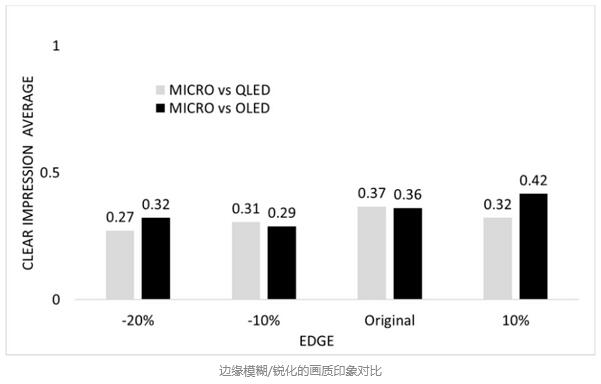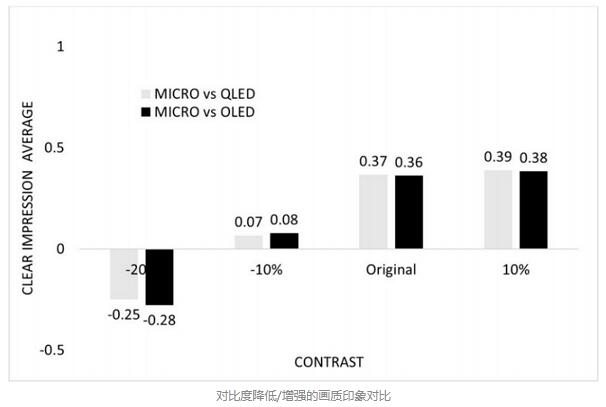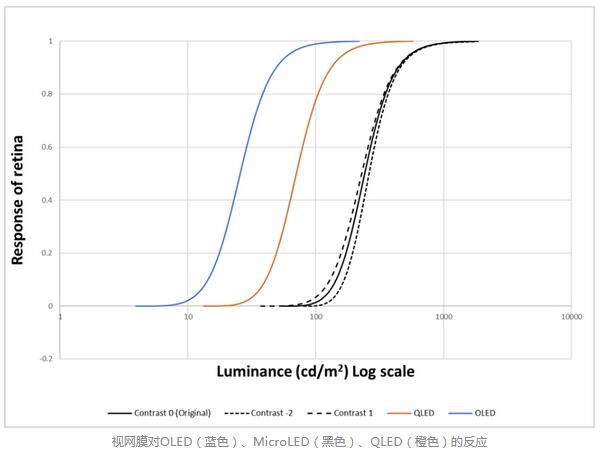Address: Room 1018, Building 2A, Skyworth Innovation Valley, Shiyan Street, Bao'an District, Shenzhen
Hotline:86-755-2735 0181
Address: First Phase Plant ,1# Zhongzhu South Road, Chuangxin Coast, Hi-Tech Area, Zhuhai City
Hotline:86-756-3639 592
In recent years, various display parameters have developed rapidly, but will the actual experience of the human eye really grow with the increase of parameters?
Samsung conducted experiments on the resolution parameter to address this issue, as the improvement brought by higher resolution was not as significant after reaching 60 cpd for the human eye. High resolution (2K to 4K, 4K to 8K) can improve image quality, but it also has an impact on sharpness and clarity.
Therefore, this experimental study compared the display effects of 4K HDR Micro LED with 8K QLED and OLED by controlling edge, contrast, brightness, and color gamut.
Introduction to the experiment
Three different images were prepared for this experiment. These images are shown in the following figure. Image 1 and Image 2 are both monochromatic images, with Image 1 being a macro image and Image 2 being a micro image. Figure 3 is a microscopic image with multi-color and finer details.

These images will be controlled to change four attributes, Edge enhancement, brightness, contrast, and color gamut. And a total of 20 subjects with vision above 20/20/20 participated in the experiment.
Since the driving method of each display is different, the measured value is taken as the measured value of the experimental image using the plane luminance meter. The minimum and maximum brightness values for each display are Micro LED 6.3x10-10:1888.37cd/m2, QLED 1.2x10-7:576.22cd/m2, OLED 7.7x10-10:217.77cd/m2. Micro LEDs have the widest brightness range.

There is a significant difference in the evaluation of clear impressions based on image types (p<. 001). Although there are differences between images, the steps between images are similar. Therefore, the average data of all three images will be used and scaled down to -1 to 1, where 0 indicates the same visual perception of the display.
Comparison results
■ Edge
Compared with 8K televisions, there is no significant difference in clarity and image quality in the effect of edge blurring/sharpening between 4K Micro LEDs (Figure 3). Even with blurry edges, the HDR display of Micro LED is subjectively evaluated as clearer and better image quality.
Comparison of image quality impressions with blurred/sharpened edges
■Contrast
Contrast has a significant impact. When the contrast is reduced by 10%, the contrast effect between an 8K TV and Micro LED is similar. When it was reduced by 20%, the evaluation results showed that the high-resolution display had clearer image quality, and when it increased by+10% compared to the original impression, the experimenter's clear impression only slightly increased.

■ Color gamut
As the color gamut increases, the image quality effect of Micro LEDs will increase. Similar to contrast, when the clarity is reduced by 20%, Micro LEDs may not perform as well as high-resolution displays. Of course, at -20%, the color gamut does not differ as much as the contrast. It can be expected that as the color gamut increases, the Micro LED effect will increase and become an important factor in improving image quality.

■ Brightness
In the brightness experiment, each image is measured using a brightness meter and the response of each monitor is calculated using the horizontal pixel line with the highest brightness on the retinal image. The results displayed by brightness on each monitor are shown in the following figure.

This image means that Micro LEDs can be viewed in brighter environments, and this light dark contrast advantage can also be said to be the best explanation for the clearer impression MicroLEDs give.
In addition, the different contrast steps displayed by Micro LED are shown in the black dashed line in the figure. As the contrast step decreases, the slope of the S-shaped curve decreases. This indicates that contrast is a sufficiently important factor.
Conclusion
This study compared the image quality of HDR 4K and LDR 8K using subjective detection and evaluation methods. When the resolution of the display exceeds 60cpd, brightness and contrast play a more important role. However, subjective clear impressions cannot unconditionally represent the overall image quality, and HDR also plays an important role in improving image quality.
Source: Expert Research Center



I consent to receive emails about news, marketing&product updates from Retop in accordance with the Retop Privacy Policy